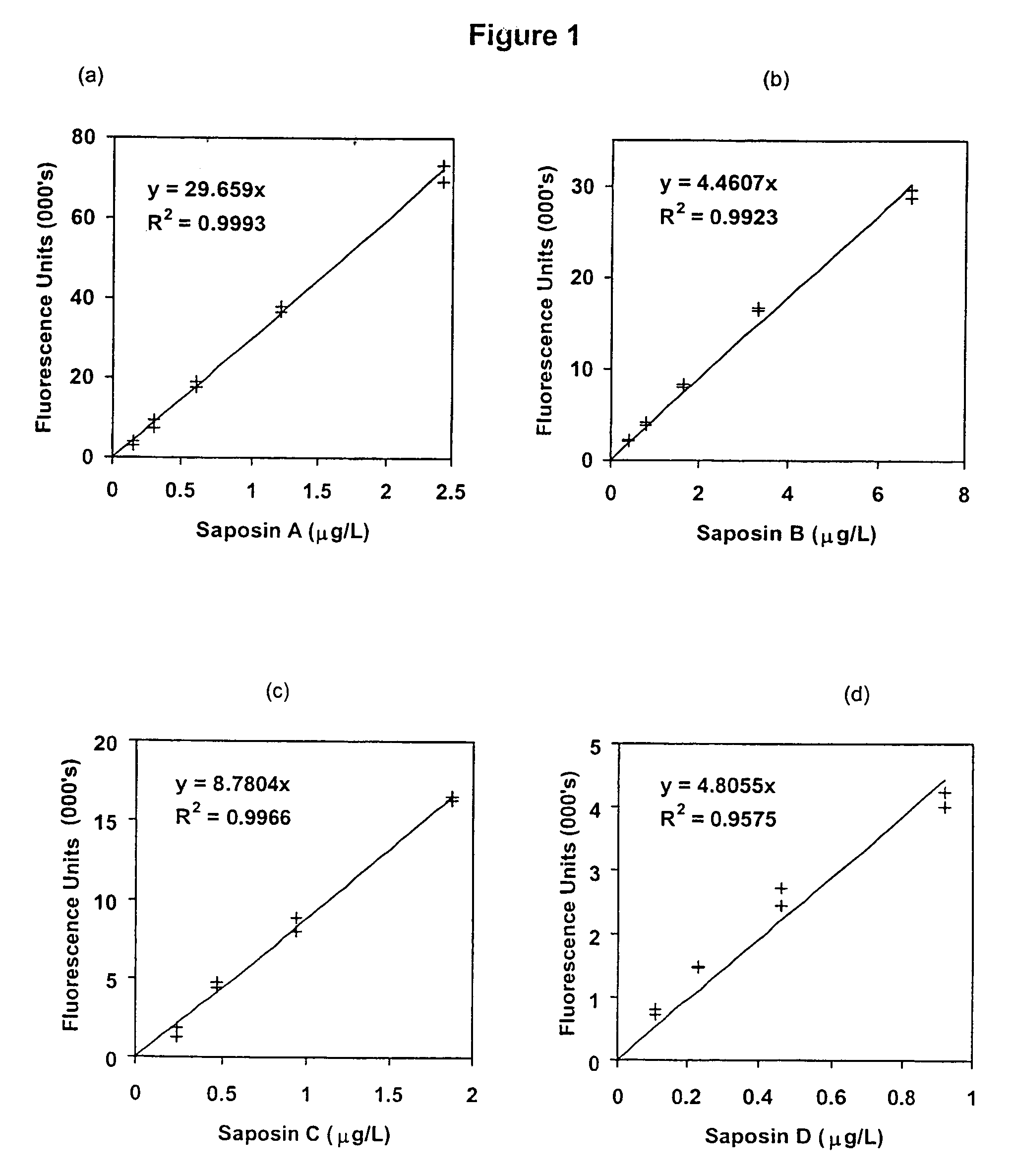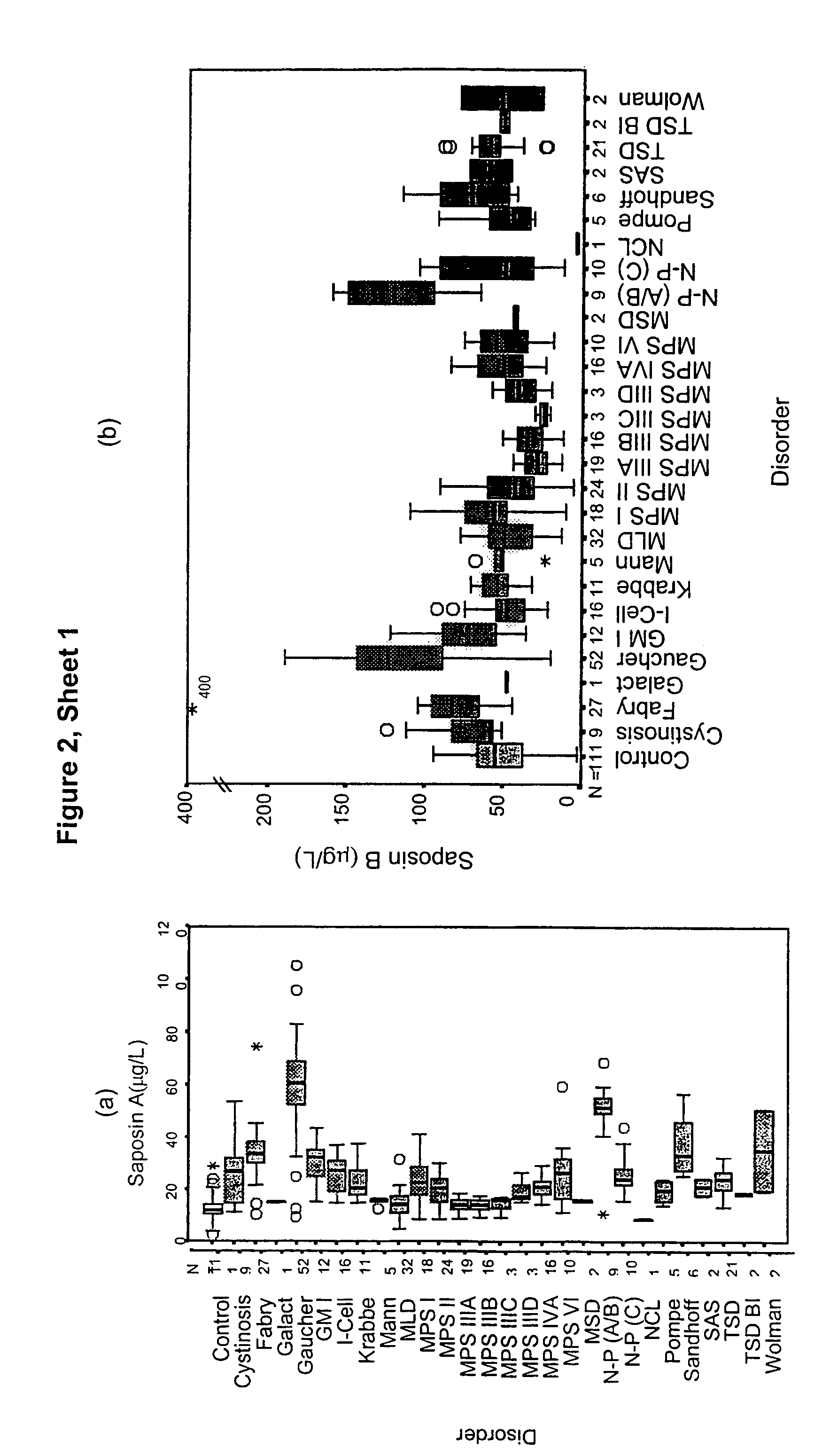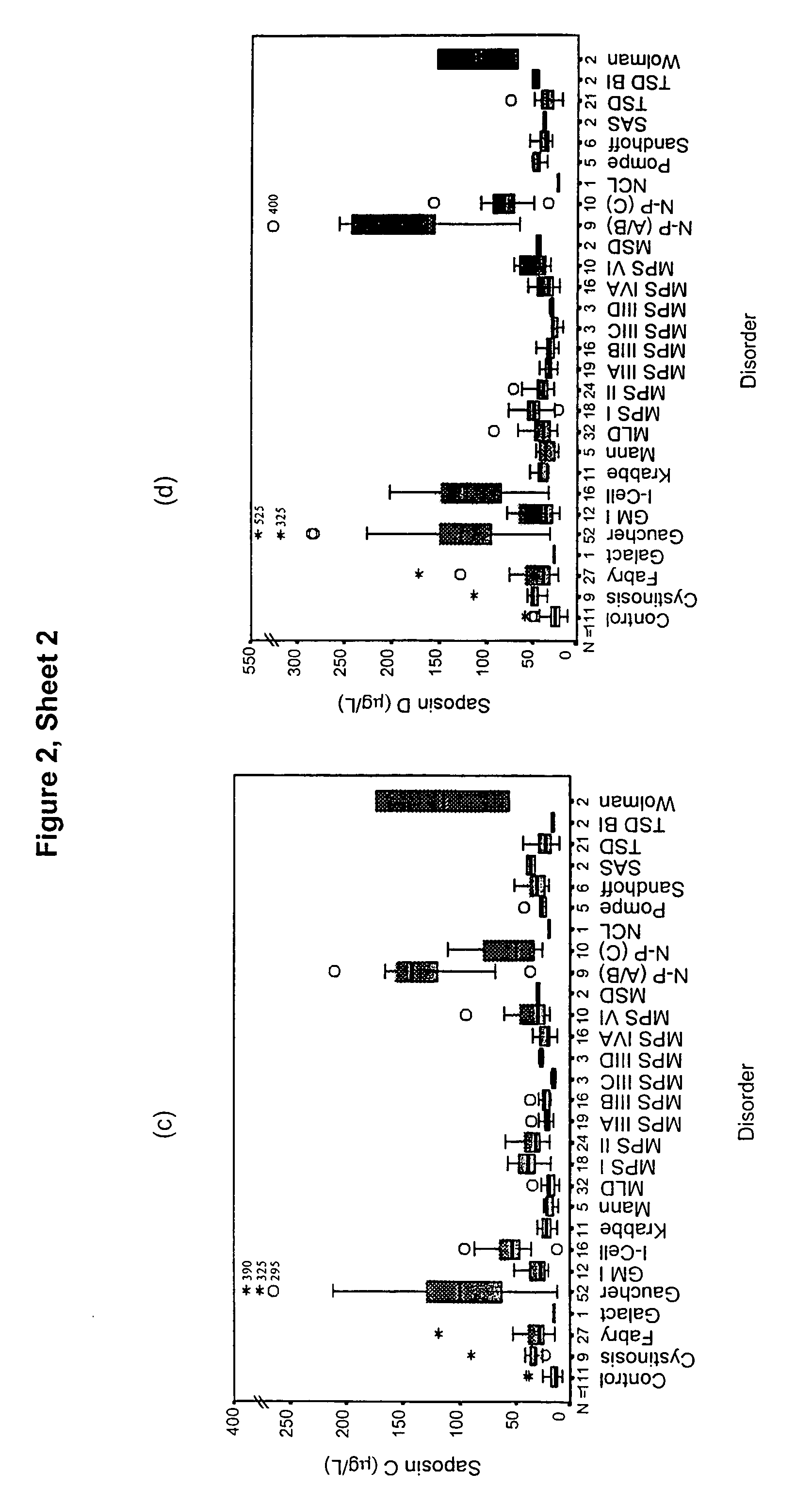Diagnosis of lysosomal storage disorders using saposins and other markers
a technology of lysosomal storage and saposin, which is applied in the direction of material testing goods, biochemistry apparatus and processes, instruments, etc., can solve the problems of increasing the size and number of lysosomes within the cells, increasing the accumulation of substrates, etc., and achieves positive treatment outcomes
- Summary
- Abstract
- Description
- Claims
- Application Information
AI Technical Summary
Benefits of technology
Problems solved by technology
Method used
Image
Examples
examples
1. Saposins as a Marker for Lysosomal Storage Disease
[0066]This example shows the suitability of saposins A, B, C and D as a screening marker for LSD by determining the levels of these proteins in plasma samples taken from unaffected and LSD-affected individuals.
[0067]Materials and Methods
[0068]Patient Samples
[0069]Plasma samples used were from samples submitted to the National Referral Laboratory (Women's and Children's Hospital, Adelaide, Australia) for LSD screening and processing for routine biochemistry. Whole blood samples for fractionation studies were obtained from healthy volunteers within the laboratory.
[0070]Polyclonal Antibodies
[0071]Anti-saposins A, B, C and D polyclonal antibodies were produced and characterised as previously described [15]. Each antibody was purified on a 2-mL Hitrap™ Protein G column (Pharmacia Biotech, Uppsala, Sweden) and quantified by absorbance at 280 nm (absorbance=1.4 for 1.0 g / L).
[0072]Europium Labelling of Polyclonal Antibodies
[0073]Purified ...
example 2
[0098]Plasma samples have been assayed for α-glucosidase protein by an immunoquantification assay using the same technology as described for the saposin study. Results are expressed as a box plot in FIG. 3. Results are also presented in Table 5 showing the median level in each disorder group, and the % of patients with an α-glucosidase level elevated above the 95th centile of the control population. Overall 55% of patients showed an elevation of α-glucosidase. All Pompe patients showed a level of α-glucosidase below the 5th centile of the control population.
[0099]Therefore, α-glucosidase is a useful marker for the detection of a range of LSD, by detecting either an elevation or a decrease in the level of this protein in plasma serum or whole blood.
[0100]
TABLE 5α-glucosidase levels in plasma from control and LSD affected individualsPERCENTILESCountMinMaxMeanStd Errelevateda0525507595control801.922.310.4.553.87.410.112.320.6acid lipase264.887.376.111.310076.1——cystinosis813.557.225.65...
example 3
[0101]The experiment shown in FIG. 2 was repeated for some of the samples using a combination of monoclonal and polyclonal antibodies to saposin C. Microliter plates were coated with the monoclonal antibody 7B2 (4 mg / L, 16 h, 4° C.), washed then incubated with plasma samples (2 μL) in assay buffer (6 h, 4° C.). The plate was washed again, then incubated with solution-phase europium labelled antibodies as indicated at 500 μg / mL (16 h, 4° C.). The plate was washed and developed with enhancement buffer (200 μL / well) and the fluorescence read. Concentrations of saposin C were calculated based on calibration curves using recombinant saposin C.
[0102]
Detection AntibodiesPlasma SamplePoly(EU)13A1(Eu)23A1(Eu) / Poly(Eu)Control(C2)4.507.8Control(C3)6.3011.3Gaucher(614)460.541Gaucher(1500)37.54.476MLD(451)4.42636MLD(552)9.439461Anti-saposin C polyclonal antibody2Anti-saposin C monoclonal antibody
[0103]The 7B2 antibody behaved similarly to polyclonal sera in the capture step. However, the 3A1 ant...
PUM
| Property | Measurement | Unit |
|---|---|---|
| concentrations | aaaaa | aaaaa |
| concentrations | aaaaa | aaaaa |
| concentrations | aaaaa | aaaaa |
Abstract
Description
Claims
Application Information
 Login to View More
Login to View More - R&D
- Intellectual Property
- Life Sciences
- Materials
- Tech Scout
- Unparalleled Data Quality
- Higher Quality Content
- 60% Fewer Hallucinations
Browse by: Latest US Patents, China's latest patents, Technical Efficacy Thesaurus, Application Domain, Technology Topic, Popular Technical Reports.
© 2025 PatSnap. All rights reserved.Legal|Privacy policy|Modern Slavery Act Transparency Statement|Sitemap|About US| Contact US: help@patsnap.com



